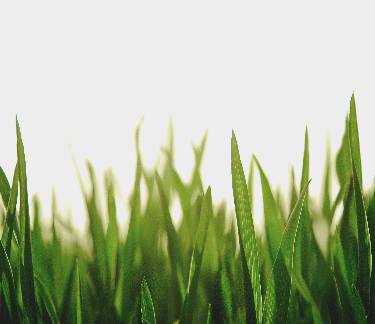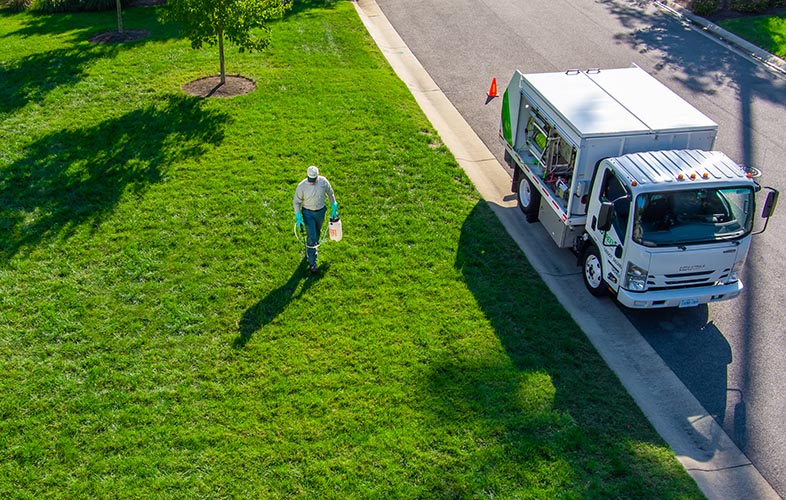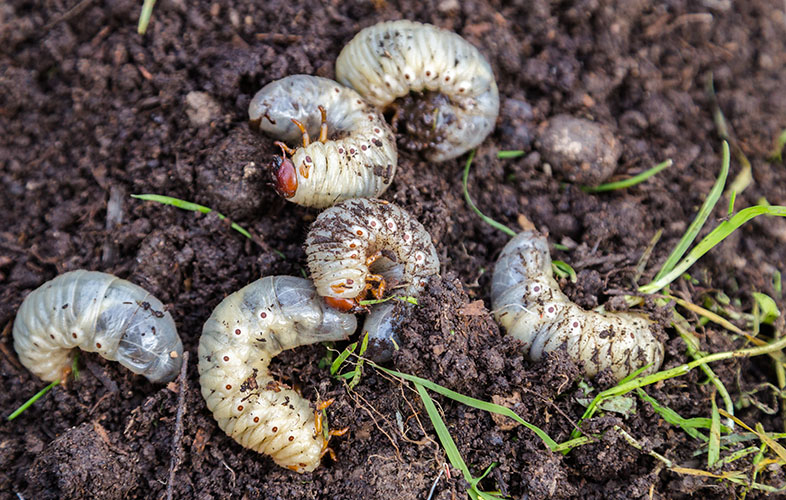The ultimate Mountain region lawn guide. Read on to learn more about grass types, turf diseases, fungi, and pest control options found in Colorado, Utah, Wyoming, and Idaho. This is your guide to getting a great lawn in the Mountain region.
We love to live life outside and we want to help you do the same. If you find it hard to navigate your lawn’s needs, this guide can help you get started. If you live in Colorado, Utah, Wyoming or Idaho, read below for tips and details on what to expect from your lawn each season. We include some of the nuisances that you may encounter, with links to programs we offer to help prevent or fix the lawn problems. We’re ready to be your partner in the quest for a healthy and pest-free lawn.
Types of grass in Colorado, Utah, Wyoming, and Idaho
Before you can get a great-looking lawn, you need to know what kind of grass you’re growing. Learning the characteristics of your grass is vital to keeping it healthy. Common grasses found in the Mountain region include Kentucky bluegrass, ryegrass, and fine fescue. Read below to learn some of the pros and cons of each.
Fine Fescue
Pros
- Excellent in shade
- Tolerant of drought and infertile soils
Cons
- Intolerant of high temperatures
- Doesn’t grow well in wet soil conditions
Kentucky Bluegrass
Pros
- High-quality appearance
- Has good low-temperature hardiness
Cons
- Poor shade tolerance
- Slow to establish
Perennial Ryegrass
Pros
- Used for overseeding and quick establishment of cover
- Good wear tolerance
Cons
- Least cold-hardy of the cool-season grasses
- Not recommended as a standalone turf grass, better if mixed as part of a seed mixture
Want to get the best-looking lawn in the neighborhood? We’re ready to help. Team up with your TruGreen specialist to help prevent and fix potential lawn problems. The following weeds, pests and seasonal needs should be kept in mind for your Rocky Mountain landscape.
Types of weeds in Colorado, Utah, Wyoming, and Idaho
Weeds are more than just a nuisance; they can be damaging to your beautiful lawn. If weeds are beginning to or fully invading your lawn, give us a call and you can begin to notice visible results within days or weeks of your first service.
Be aware that these visible results may seem alarming, as they can mean changing colors or the development of bare spots. But don’t be worried; these are normal signs that those pesky weeds are dying out, which means your grass will have more space and nutrients. As your dedicated specialist continues working over the following weeks and months, your lawn’s appearance will continue to improve. Keep a watchful eye for the following weeds that are commonly found in Colorado, Utah, Wyoming, and Idaho.
Crabgrass
Crabgrass is an annual warm-season weed, which means it thrives in the heat and will sprawl anywhere it can find sunlight, water, and bare soil. This weed is known for quickly invading a lawn and being difficult to remove in a timely manner. The TruGreen Lawn Care program can help limit the spread of this difficult-to-control weed, but you can also help by keeping up with proper prevention techniques and regular maintenance. To help prevent the arrival and spread of crabgrass, we recommend that you maintain a thick, healthy lawn, mow your grass at the proper height, and avoid light or excess watering.
Dandelion
These classic, yellow-flowered weeds are prevalent in untreated lawns in the Rocky Mountain region. The broadleaf weed radiates from one central point on a very short stem that barely rises above soil level, making it extremely difficult to pull cleanly from the ground. All of our plans offer pre-emergent and targeted weed control to help eliminate unwanted weeds. See which plan fits your needs best here!
Spurge
Spurge is an annual weed that can be identified by its oblong, hairy leaves. Applying pre-emergent is the best fight against the spread of spurge, especially if you’ve had encounters with it in previous years. If you find it’s too late for a pre-emergent, talk to your TruGreen specialist about post-emergent weed control options.
Oxalis
Oxalis, also known as yellow wood sorrel, is identified by its pale green, heart-shaped leaflets, which can be similar to clover in appearance. To prevent the spread of this weed, sign up for regular fertilization applications to ensure your grass is healthy and lush.
Thistle
Though there are numerous types of thistle weeds out there, Canada thistle is commonly found in Colorado and other Mountain states. It is a non-native, deep-rooted perennial that can grow 2 to 4 feet high. Their flowers vary from white to purple and occur in small clusters. Mowing at recommended heights and maintaining grass health will help to prevent the spread of this noxious weed.
Common lawn diseases in the Mountain region include dollar spot, snow mold, necrotic ring spot, and leaf blight.
For fighting common lawn diseases in Colorado, Utah, Wyoming, and Idaho, consider signing up for TruGreen’s TruHealth Lawn Plan, which provides protection, essential nutrients, and balanced soil to your lawn.
Common lawn pests found in Mountain state lawns include chinch bugs, white grubs, billbugs, and winter grain mites.
For fighting common lawn pests in your state, consider TruGreen’s TruShield Lawn Pest Control, which can significantly reduce the number of pests in your yard, or Mosquito Defense, which can eradicate biting mosquitoes from your property.
How to care for your Mountain region lawn each season
As the seasons and weather changes, so do your lawn’s needs. If you’re not sure what responsibilities are needed, your TruGreen specialist can provide you with tips and advice as seasonal changes affect your grass. The tips below can help you stay on track for a lush, healthy yard.
Summer
- As the weather gets drier, make sure your yard is still receiving the water it needs. Aim to water twice a week, for a total of two inches of water.
- Be careful to not overwater: Overwatering encourages shallow rooting and can increase disease activity.
- Continue mowing regularly. Avoid mowing your lawn when wet or wilted due to drought.
- If you notice any weeds or brown patches between treatments, call your TruGreen specialist.
- If mosquitoes are ruining your time outdoors, sign up for TruGreen’s Mosquito Defense to eradicate the biting pests from your yard.
Fall
- Summer activities can cause compacted soil, which in turn can hurt your yard’s health. Ask your TruGreen specialist if an aeration service could benefit your grass. Wondering how aeration works? Check out our video about fall aeration below.
- As the rain begins to return to the area, adjust your watering schedule accordingly.
- Continue to mow regularly until growth stops and your grass goes dormant.
- Service your lawn mower and prepare it for storage by draining the gas tank and changing the oil.
- If your yard has a lot of fallen leaves, rake and gather the leaves and use them in your compost pile.
Winter
- If you have a sprinkler system, reprogram your timers so that watering is decreased during the winter.
- Mow and water as necessary.
- Once snow and freezing temperatures move in, try to stay off the grass as much as possible. Too much foot traffic can damage your grass and leave an impact until spring.
- Save your shovel for another time. Ask your TruGreen specialist about getting an ice melt delivery to help clear your sidewalks and driveways.
- If you notice any weeds in between your treatments, call your TruGreen specialist for treatment.
Spring
- Rake any leaves and mow to remove excess old growth. This also helps with spring green-up.
- Help your lawn recover from winter by talking to your specialist about aeration and overseeding services.
- Check your yard for bare spots. If you find some developing, speak with your specialist about seeding options.
- Mow regularly. We recommend keeping your turf cut to a height of three inches. If you want to show off your healthy lawn, consider mowing with a striping technique, as detailed in our video below.
- As spring turns to summer, insects and diseases may start becoming more active. Call your TruGreen specialist if you see any sign of color change or damage.
- Sign up for TruGreen’s Mosquito Defense to prevent biting mosquitoes from invading your yard as the temperatures heat up.
- Late in May, you may notice your lawn start to go into seeding stage. Don’t worry; this is normal.
Together, we can make a lawn you’ll love
In Mountain states like Colorado, Utah, Wyoming, and Idaho, your yard has to deal with changing seasons. We can team up to apply seasonally appropriate pre- and post-emergent weed treatments, as well as fertilizer to stimulate your lawn’s color and growth and to help fortify it against changing conditions. To achieve a healthy lawn, we ask that you receive regular service visits, and follow the guidelines outlined above to help you achieve the best results possible. If you’re not signed up yet for regular services, click here to find a local branch near you or fill out the green box on the left to get a personal quote today.













